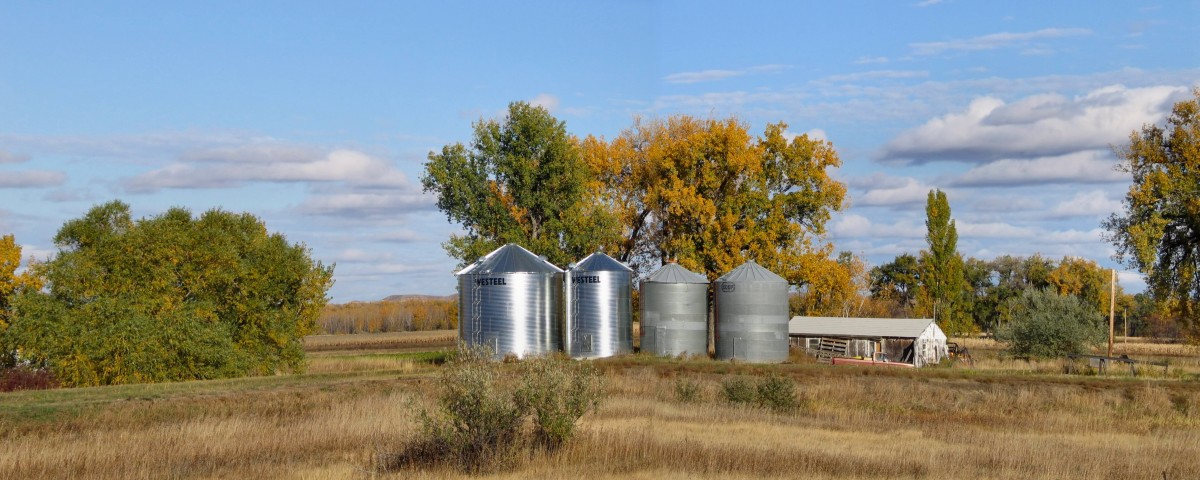February 1, 2019
By Michelle Pelletier Marshall, GAI Media
 With the goal of providing safe, abundant, and affordable food, California-based startup Centaur Analytics seeks to end post-harvest crop losses, reclaiming the estimated $1 trillion of crop value wasted each year to improper storage and spoilage to “create” more food for the ever-increasing world population.
With the goal of providing safe, abundant, and affordable food, California-based startup Centaur Analytics seeks to end post-harvest crop losses, reclaiming the estimated $1 trillion of crop value wasted each year to improper storage and spoilage to “create” more food for the ever-increasing world population.
According to co-founder, president, and CEO Sotiris Bantas, the Centaur Internet-of-Crops Platform gives food and commodity industries an unprecedented capacity to track, monitor, and understand the quality of the world’s food when stored, transported, and delivered to shelves. With as much as 50 to 60 percent of cereal grains lost during storage, this new technology – which is based on smart wireless sensors, data analytics, and advanced modeling software – can address this challenge and reduce post-harvest losses.
In October 2018, the company raised $3 million from a consortium of investors led by early-stage tech investor Marathon Venture Capital, and including Detia Degesch Group, and the Israeli-American serial entrepreneur Avi Reichental.
We talked with Bantas at year’s end to see what the future holds for Centaur.
1. The Centaur sensor is unique in that it provides wireless monitoring from inside the storage core to ensure end-to-end visibility of the supply chain. Can you please explain how this works and benefits farmers?
To achieve the most accurate readings, Centaur’s sensors have been engineered to sit within the grain mass in nearly any type of grain storage (silo, grain bags, grain piles, etc.). This is critically important because we view this as the only approach for users – whether farmers or elevator operators or even grain millers – to understand and predict in advance all of the potential quality and spoilage risks impacting the grain throughout storage as its transits the supply chain. Our sensors transmit readings wirelessly at regular intervals to our system, giving a full picture of how the grain is stored.
With the sensor inside the storage, we are able to detect very subtle changes. When coupled with our digital simulation capabilities of each storage bin, we use these small changes to determine what is happening throughout the entire grain mass. With very accurate readings in the right places, and incorporating other available information about the condition of the storage, such as location, weather, solar, and wind, this enables us to produce highly accurate digital models at thousands of points within the entire grain mass.
Traditional monitoring systems, such as silo cables or sampling, can do an adequate job of detecting the grain within an inch or two of the measurement. However, this is only a fraction of areas where problems and spoilage can occur in grain. A point-sampling approach is great if you are lucky enough to end up having a silo cable sensor hanging right next to the point where a hotspot develops. But, if not, major problems can go undetected. We knew a better solution was possible. With our system, the farmer or grain operator can understand the grain condition at every point in the grain mass and know the risks faced in the weeks and months ahead. They are able to use this real time view in a modern way, accessing it via their mobile phone or computer, or integrating this information into their other planning systems.
2. Your aim to enhance post-harvest grain quality and marketability with this new predictive and cognitive technology is admirable. How has the product performed and driven results thus far?
We are seeing strong interest at all levels of the grains supply chain – whether on-farm, such as in a silo and grain bags, or all the way up to the grain piles of major grain companies. In general, I would say our customers are still early adopters for now, looking for an edge, looking to improve their margins with premium quality, deal with limited labor resources, and improve their ability to manage risk. When we look at the grains industry, we see an industry that has not substantially changed in literally 30 to 40 years. This always amazes me. Nearly all of the world’s major supply chains from other industries have successfully and profitably adopted advanced enterprise resource planning (ERP) systems or other advanced tools to analyze every aspect of their supply chain. Yet, why isn’t this true to the same extent for the grain supply chain, by connecting farms with elevators, all of the way up to the operations of major grain companies to provide a real time view of quantity, quality, characteristics, and marketability in a modern way? This is coming soon.
3. What companies are currently using the Centaur Sensor, and what are your growth predictions? Will the product be available in the U.S. as well as internationally?
Our Internet-of-CropsTM platform and sensors are growing nicely, as we find many counter intuitive aspects to the grains industry. In many ways, outside the U.S., crop loss and spoilage receive a greater top of mind acknowledgement as being a major issue to be solved. This helps our growth internationally. Yet, in the U.S., while having somewhat reduced physical losses, the actual financial value missed from quality slippage (a lost opportunity to sell the higher quality grain which initially came off the field) is massive for farmers and grain companies. We have installations in about 15 countries, and will soon add more countries. Between the U.S., Argentina, across the EU, Africa, India, and even in Costa Rica with our existing projects, we have set our sights on solving loss wherever it exists. As we say, we are building a global, post-harvest quality chain, and there are substantial steps waiting to be achieved.
Detia Degesch Group, a major global chemicals manufacturer and provider of fumigants and pest treatments, has been a significant supporter of us. This has helped us greatly to validate our products in the early phases, ensure they are robust enough to withstand adverse conditions inside storage environments, understand the impacts of pests and validate our models, and gain insights into the key challenges of the global food and agriproduct supply chain.
4. The $3 million investment round is being used to expand your base of connected sensors worldwide and extend functionality. What is the expectation for future rounds?
We see a change coming among grain producers and grain suppliers as more technology reaches the post-harvest grain supply chain. A point is coming, if we are not already there now, when farmers and grain companies alike will aggressively compete on quality, not just purely shipping on volume of standardized commodities. This will involve preserving the identity of all of the aspects affecting the grain from planting, and tracking this throughout the post-harvest. We believe Centaur is best placed to lead this era of change. We anticipate future funding rounds over the next year to ensure we can seize this opportunity and are best positioned to benefit from this evolution.
To learn more about Centaur Analytics, visit www.centaur.ag.
ABOUT SOTIRIS BANTAS
Bantas is co-founder, president, and CEO of Centaur Analytics. He is experienced in bringing technology startups to multi-million dollar global accounts, as he did for his prior software company, Helic, Inc. He holds a PhD. in microelectronics and a degree in electrical engineering from the National Technical University of Athens.
Michelle Pelletier Marshall is managing editor for Global AgInvesting’s quarterly GAI Gazette magazine and a regular contributor to GAI News. She can be reached at mmarshall@globalaginvesting.com.

Let GAI News inform your engagement in the agriculture sector.
GAI News provides crucial and timely news and insight to help you stay ahead of critical agricultural trends through free delivery of two weekly newsletters, Ag Investing Weekly and AgTech Intel.




